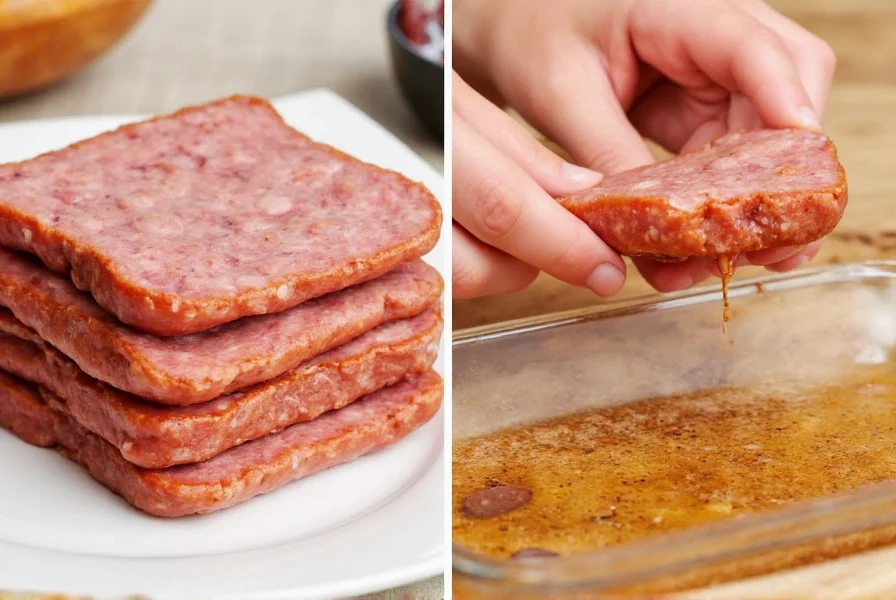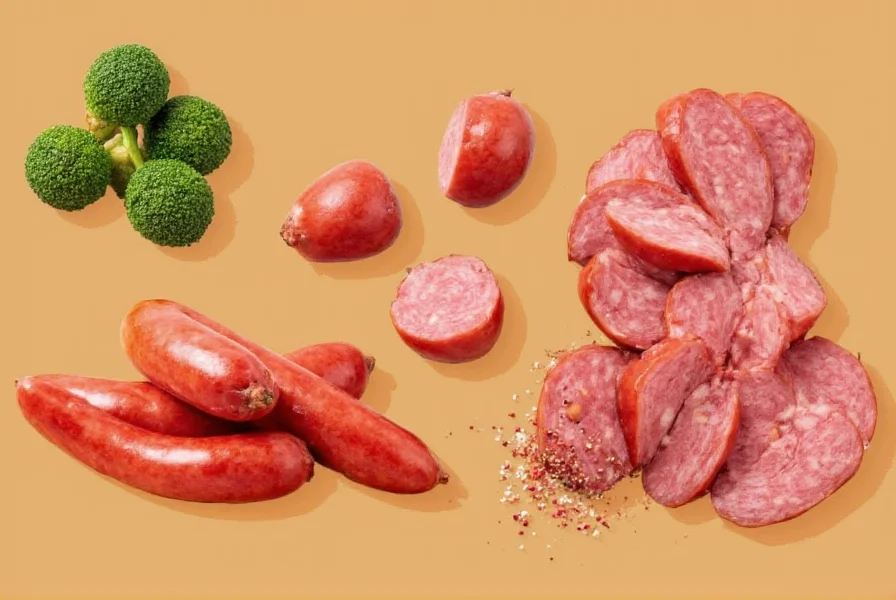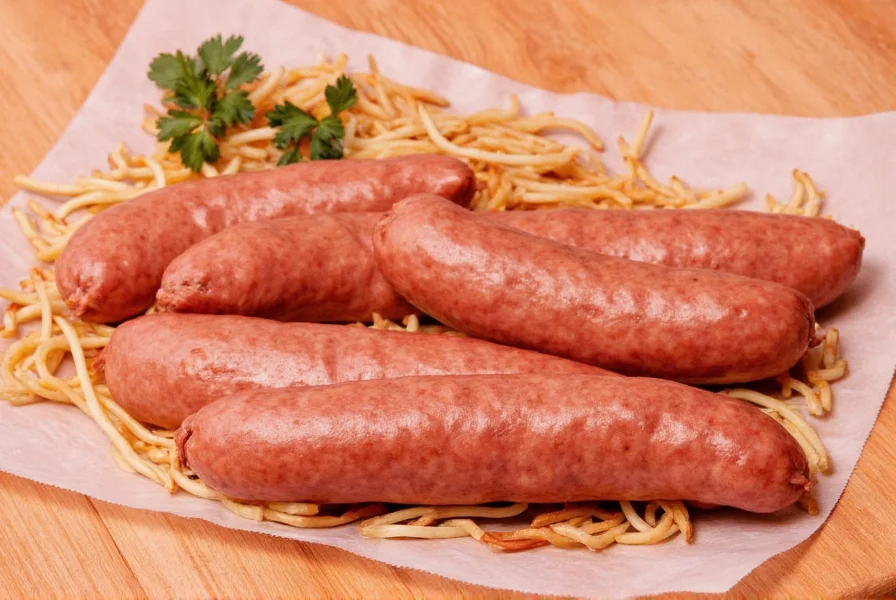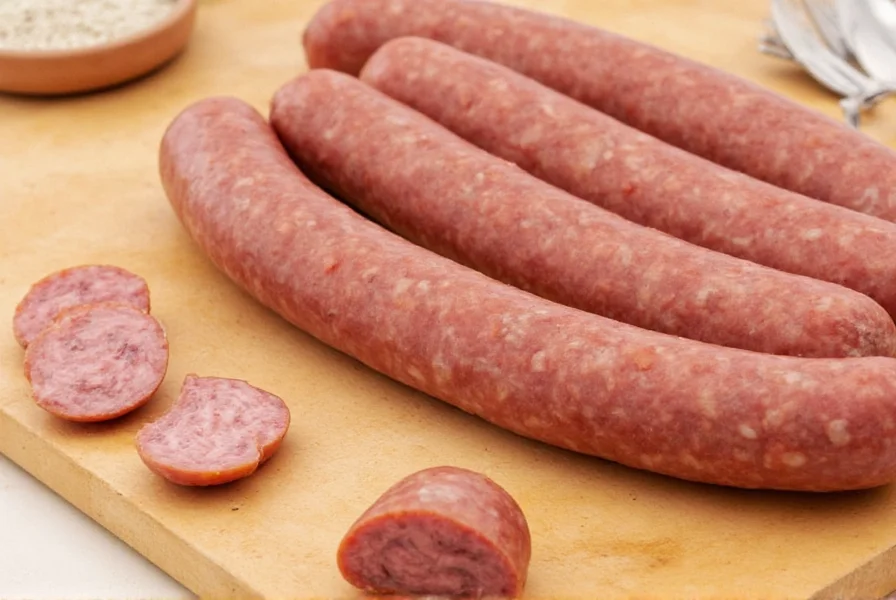Discover the truth about sausage seasoning: a dry spice blend designed to elevate your dishes with rich, savory flavor. Unlike the common misconception of "seasoning sausage," sausage seasoning is not a meat product but a versatile powder mix of salt, pepper, paprika, garlic powder, and herbs. This guide provides accurate, expert-backed techniques for using it effectively in cooking.
In this article, we'll explore how to master sausage seasoning for maximum flavor—covering storage, DIY blends, and creative applications. Whether you're making homemade sausages or enhancing everyday meals, these tips will transform your culinary results.
Table of Contents
- What Exactly Is Sausage Seasoning?
- Hack #1: Create Flavor Paste for Marinating
- Hack #2: Proper Storage for Freshness
- Hack #3: DIY Custom Blends in Minutes
- Hack #4: Freeze for Long-Term Use
- Hack #5: Infuse Oils for Versatile Cooking
- Hack #6: Salt-Free Flavor Booster
- Hack #7: Blend with Meat for Perfect Sausages
- Buying Guide: Choosing the Best Blend
- Frequently Asked Questions
- Final Thoughts

What Exactly Is Sausage Seasoning?
Sausage seasoning is a dry spice blend specifically formulated to flavor homemade sausages or other dishes. It contains no meat or fat—unlike "seasoning sausage" (which is not a standard culinary term). Instead, it's a mixture of salt, pepper, paprika, garlic powder, fennel, and herbs that adds depth and complexity to proteins, vegetables, and grains.
According to culinary experts from the American Culinary Federation, this blend is essential for achieving authentic sausage flavor when making homemade versions. It's also widely used to enhance soups, stews, and roasted vegetables without adding extra sodium.

Hack #1: Create Flavor Paste for Marinating
Instead of using dry powder alone, mix sausage seasoning with a neutral oil to create a flavorful paste. This paste penetrates meat deeply, ensuring even seasoning and tender results. Ideal for marinating chicken, pork, or beef before grilling or roasting.
How to Make Flavor Paste:
- Combine 2 tablespoons sausage seasoning with 1 tablespoon olive or avocado oil
- Stir until smooth
- Coat meat evenly and marinate for 30 minutes to 2 hours
| Hack | Time Needed | Best For |
|---|---|---|
| Flavor Paste | 5 minutes prep | Marinating proteins |

Hack #2: Proper Storage for Freshness
Exposure to air, light, and moisture causes sausage seasoning to lose potency. Proper storage preserves its vibrant flavor for months.
- Store in an airtight glass container away from heat and sunlight
- Keep in a cool, dark pantry (not near the stove)
- For long-term storage, freeze in small portions
Storage Comparison:
| Method | Shelf Life | Pros | Cons |
|---|---|---|---|
| Pantry (Airtight) | 6 months | Easy access | Flavor fades over time |
| Refrigerated | 12 months | Slows oxidation | Moisture risk if not sealed |
| Freezer | 2 years | Longest freshness | Requires freezer space |

Hack #3: DIY Custom Blends in Seconds
Enhance store-bought sausage seasoning with simple additions for personalized flavor profiles. This works for any dish—no need to buy multiple blends.
Pro Tip:
Add smoked paprika for smoky depth or cumin for earthy notes. Always start with small amounts and taste as you go.
| Blend Base | Flavor Profile |
|---|---|
| Original + Brown Sugar | Sweet and savory |
| Original + Smoked Paprika | Rich and smoky |
| Original + Cumin + Chili Powder | Spicy and bold |

Hack #4: Freeze for Long-Term Use
Prevent waste by freezing sausage seasoning in portioned amounts. Simply measure into small containers or freezer bags, label, and thaw as needed.
This method is ideal for bulk purchases during sales and ensures you always have fresh seasoning on hand for quick meals.

Hack #5: Infuse Oils for Versatile Cooking
Turn sausage seasoning into a gourmet oil infusion for drizzling over salads, pasta, or roasted vegetables. The fat in the oil carries the spices' flavors, creating restaurant-quality results at home.
Infusion Tips:
- Use neutral oils like grapeseed or avocado for clean flavor
- Heat oil gently with seasoning for 5 minutes, then strain
- Store in dark glass bottles to preserve freshness

Hack #6: Salt-Free Flavor Booster
Reduce sodium intake while keeping dishes flavorful. Sausage seasoning provides rich umami notes without added salt—perfect for health-conscious cooking.
Dish Ideas:
- Stir into roasted vegetables before baking
- Blend into mashed potatoes or cauliflower
- Season rice or quinoa during cooking

Hack #7: Blend with Meat for Perfect Sausages
Make homemade sausages with restaurant-quality flavor by combining ground meat with sausage seasoning. This ensures even distribution and authentic taste.
Recommended Meat Ratios:
| Meat Blend | Ratio | Why It Works |
|---|---|---|
| Pork + Sausage Seasoning | 80% meat, 20% seasoning | Classic Italian-style flavor |
| Beef + Sausage Seasoning | 75% meat, 25% seasoning | Rich and hearty for burgers |
| Chicken + Sausage Seasoning | 70% meat, 30% seasoning | Light and aromatic for kebabs |

Buying Guide: Choosing the Best Blend
Not all sausage seasonings are equal. Look for blends with natural ingredients and no artificial additives. Here's how to select the right one for your needs.
Top Picks for Different Needs:
| Product | Features | Best For | Recommended Occasions |
|---|---|---|---|
| Spiceology Italian Sausage Blend | Fennel, garlic, oregano; no added salt | Homemade sausages, pasta sauces | Weeknight dinners, family meals |
| McCormick Breakfast Sausage Seasoning | Maple, sage, black pepper | Scrambled eggs, breakfast hashes | Brunches, camping trips |
| Spicewalla Mexican Sausage Blend | Chipotle, cumin, chili powder | Tacos, enchiladas, chili | Taco Tuesdays, fiestas |
| Simply Organic Smoked Sausage Blend | Smoked paprika, hickory, garlic | BBQ, stews, grilled veggies | Grill parties, potlucks |
Buying Tips:
- Check ingredient lists—avoid products with artificial colors or preservatives
- Look for blends with clear expiration dates
- Buy small quantities to ensure freshness
- Choose brands with third-party certifications (e.g., USDA Organic)

Frequently Asked Questions
Got questions about sausage seasoning? Here are expert answers to common queries:
What's the difference between sausage seasoning and regular seasoning?
Sausage seasoning is a specialized blend designed for meat applications, typically containing higher levels of salt, garlic, and fennel. Regular seasonings like all-purpose blends are more versatile but lack the depth for authentic sausage flavor.
Can I make my own sausage seasoning at home?
Absolutely! A basic recipe is 1 cup salt, 2 tablespoons black pepper, 2 tablespoons paprika, 1 tablespoon garlic powder, and 1 teaspoon fennel seeds. Adjust ratios to taste. Store in an airtight container for up to 6 months.
Is sausage seasoning gluten-free?
Most commercial sausage seasonings are naturally gluten-free, but always check labels for additives like maltodextrin. Homemade versions are guaranteed gluten-free by default.
How do I know if my sausage seasoning has gone bad?
Fresh sausage seasoning should have vibrant color and strong aroma. If it turns dull, clumps, or smells musty, discard it. Proper storage prevents spoilage.
Can I use sausage seasoning in vegetarian dishes?
Yes! It adds savory depth to plant-based proteins like tofu, lentils, or mushrooms. Simply sprinkle on roasted vegetables or mix into bean burgers for extra flavor.
What's the best way to use sausage seasoning for sausages?
For homemade sausages, mix 2-3 tablespoons of seasoning per pound of ground meat. Add ice-cold water to help bind the mixture, then chill before casing or forming patties.
Does sausage seasoning contain sodium?
Most commercial blends contain salt, but low-sodium options are available. Check labels for sodium content—some brands offer "no added salt" versions for health-conscious cooks.
Final Thoughts
With these accurate, expert-backed techniques, sausage seasoning becomes your secret weapon for flavorful, healthy cooking. Remember: it's a dry spice blend—not a meat product—and mastering its use elevates everything from weeknight dinners to special occasions.
By prioritizing quality ingredients and proper storage, you'll consistently achieve restaurant-quality results. Start experimenting today and taste the difference professional techniques make!












 浙公网安备
33010002000092号
浙公网安备
33010002000092号 浙B2-20120091-4
浙B2-20120091-4